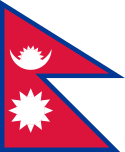Azjatyckie Igrzyska Sportów Walki 2009
| |||
| Stolica igrzysk | |||
|---|---|---|---|
| Liczba ekip | 37 | ||
| Liczba sportowców | 892 | ||
| Liczba konkurencji | 108 w 9 dyscyplinach | ||
| Otwarcie | 1 sierpnia 2009 | ||
| Zamknięcie | 9 sierpnia 2009 | ||
| Znicz olimpijski | Tony Jaa | ||
| Stadion | Hala Huamark | ||
| Zwycięzca klasyfikacji medalowej: | |||
Azjatyckie Igrzyska Sportów Walki 2009 – 1. edycja azjatyckich igrzysk sportów walki, które odbyły się w stolicy Tajlandii - Bangkoku, w dniach 1–9 sierpnia 2009. Tabelę medalową wygrali gospodarze zawodów zdobywając 21 złotych medali.
Oficjalną maskotką igrzysk był Hanuman – super małpa o kremowej barwie i jednocześnie jako bóstwo w hinduizmie, uznawane za króla małp, posiadające wszystkie cechy i umiejętności przydatne w walce oraz determinację i wiarę w sukces[1].
Kalendarz
| CO | Ceremonia otwarcia | ● | Zawody | 1 | Finały zawodów | CZ | Ceremonia zamknięcia |
| sierpień 2009 | 1 Sob | 2 Nie | 3 Pon | 4 Wt | 5 Śr | 6 Czw | 7 Pt | 8 Sob | 9 Nie | Złote medale |
|---|---|---|---|---|---|---|---|---|---|---|
| 8 | 6 | 14 | ||||||||
| 2 | 3 | 2 | 7 | |||||||
| 3 | 4 | 3 | 10 | |||||||
| ● | ● | ● | 10 | 10 | ||||||
| 4 | 5 | 5 | 14 | |||||||
| ● | ● | ● | ● | 15 | 15 | |||||
| ● | ● | ● | 11 | 11 | ||||||
| 4 | 4 | 4 | 4 | 16 | ||||||
| 2 | 1 | ● | 8 | 11 | ||||||
| Łącznie złotych medali | 12 | 10 | 6 | 9 | 10 | 45 | 16 | 108 | ||
| Ceremonie | CO | CZ | ||||||||
| sierpień 2009 | 1 Sob | 2 Nie | 3 Pon | 4 Wt | 5 Śr | 6 Czw | 7 Pt | 8 Sob | 9 Nie | Złote medale |
Obiekty sportowe
- Hala Huamark – karate, taekwondo
- Stadion Nimibutr – boks tajski
- Stadion Chantana YingYong – kickboxing
- Tajsko-Japońskie Centrum Młodzieżowe – judo, ju-jitsu, kurash
- Centrum sportowe Silpa-Archa Suphanburi w Suphanburi – wushu
- Chao Fa Maha Chakri Sirindhorn w Suphanburi – pencak silat
Rezultaty w poszczególnych dyscyplinach
 Judo
Judo Ju-Jitsu
Ju-Jitsu Karate
Karate Kickboxing
Kickboxing Kurash
Kurash Boks tajski
Boks tajski Pencak silat
Pencak silat Taekwondo
Taekwondo Wushu
Wushu
Tabela medalowa
| Poz. | Państwo[2] | ||||
|---|---|---|---|---|---|
| 1 | 21 | 17 | 16 | 54 | |
| 2 | 15 | 7 | 12 | 34 | |
| 3 | 10 | 6 | 3 | 19 | |
| 4 | 9 | 5 | 5 | 19 | |
| 5 | 9 | 2 | 3 | 14 | |
| 6 | 7 | 11 | 21 | 39 | |
| 7 | 5 | 6 | 5 | 16 | |
| 8 | 4 | 5 | 12 | 21 | |
| 9 | 4 | 5 | 11 | 20 | |
| 10 | 3 | 7 | 23 | 33 | |
| 11 | 3 | 2 | 4 | 9 | |
| 12 | 2 | 6 | 10 | 18 | |
| 13 | 2 | 3 | 5 | 10 | |
| 14 | 2 | 3 | 3 | 8 | |
| 15 | 2 | 2 | 8 | 12 | |
| 15 | 2 | 2 | 8 | 12 | |
| 17 | 2 | 1 | 3 | 6 | |
| 18 | 1 | 4 | 9 | 14 | |
| 19 | 1 | 3 | 3 | 7 | |
| 20 | 1 | 1 | 3 | 5 | |
| 21 | 1 | 1 | 2 | 4 | |
| 21 | 1 | 1 | 2 | 4 | |
| 21 | 1 | 1 | 2 | 4 | |
| 24 | 0 | 2 | 3 | 5 | |
| 24 | 0 | 2 | 3 | 5 | |
| 26 | 0 | 1 | 4 | 5 | |
| 27 | 0 | 1 | 2 | 3 | |
| 28 | 0 | 1 | 1 | 2 | |
| 29 | 0 | 0 | 2 | 2 | |
| 30 | 0 | 0 | 1 | 1 | |
| 30 | 0 | 0 | 1 | 1 | |
| 30 | 0 | 0 | 1 | 1 | |
| Łącznie | 108 | 108 | 191 | 407 | |
Gospodarz igrzysk
Przypisy
- ↑ Mascot, Bangkok 2009 - Hanuman, God King of the Apes, ocasia.org, [dostęp: 2017-04-13].
- ↑ Tabela medalowa Azjatyckich Igrzysk Sportów Walki 2009 (strona zarchiwizowana). info.bamag2009.com. [zarchiwizowane z tego adresu (2010-01-08)]., bamag2009.com, [dostęp: 2017-04-13].
Linki zewnętrzne
- Dane dotyczące igrzysk (strona zarchiwizowana). ocasia.org. [zarchiwizowane z tego adresu (2010-06-13)]., ocasia.org, [dostęp: 2017-04-13].
- First Asian Martial Arts Games - Schedule (strona zarchiwizowana). info.bamag2009.com. [zarchiwizowane z tego adresu (2009-09-07)]., bamag2009.com, [dostęp: 2017-04-13].
- First Asian Martial Arts Games (strona zarchiwizowana). ocasia.org. [zarchiwizowane z tego adresu (2008-12-07)]., ocasia.org, [dostęp: 2017-04-13].
- Lista państw uczestniczących i liczba sportowców z poszczególnych państw, ocasia.org, [dostęp: 2017-04-13].
Media użyte na tej stronie
Autor: https://phabricator.wikimedia.org/diffusion/GOJU/browse/master/AUTHORS.txt, Licencja: MIT
An icon from the OOjs UI MediaWiki lib.
Autor: https://phabricator.wikimedia.org/diffusion/GOJU/browse/master/AUTHORS.txt, Licencja: MIT
An icon from the OOjs UI MediaWiki lib.
The national flag of Kingdom of Thailand since September 2017; there are total of 3 colours:
- Red represents the blood spilt to protect Thailand’s independence and often more simply described as representing the nation.
- White represents the religion of Buddhism, the predominant religion of the nation
- Blue represents the monarchy of the nation, which is recognised as the centre of Thai hearts.
Pictograms of Olympic sports - Judo. This is unofficial sample picture. Images of official Olympic pictograms for the 1948 Summer Olympics and all Summer Olympics since 1964 can be found in corresponding Official Reports.
Pictograms of Olympic sports - Taekwondo. This is unofficial sample picture. Images of official Olympic pictograms for 1948 Summer Olympics and all Summer Olympics since 1964 can be found in corresponding Official Reports.
bendera Indonesia
Official flag used by the Fédération Internationale de Football Association (FIFA) to represent Chinese Taipei in association football matches. Also used at the Olympics from 1986 to 2010.
The Flag of India. The colours are saffron, white and green. The navy blue wheel in the center of the flag has a diameter approximately the width of the white band and is called Ashoka's Dharma Chakra, with 24 spokes (after Ashoka, the Great). Each spoke depicts one hour of the day, portraying the prevalence of righteousness all 24 hours of it.
Łatwo można dodać ramkę naokoło tej grafiki
Flag of Laos
Autor: FilRB / Maix, Licencja: CC BY 3.0
A gold/silver/bronze medals icon for Asian Games
Pictogram for Kurash
(c) BTechTV z angielskiej Wikipedii, CC BY-SA 3.0
The pictogram of Indonesian sport, Pencak Silat
Pictograms of Olympic sports - Karate












































